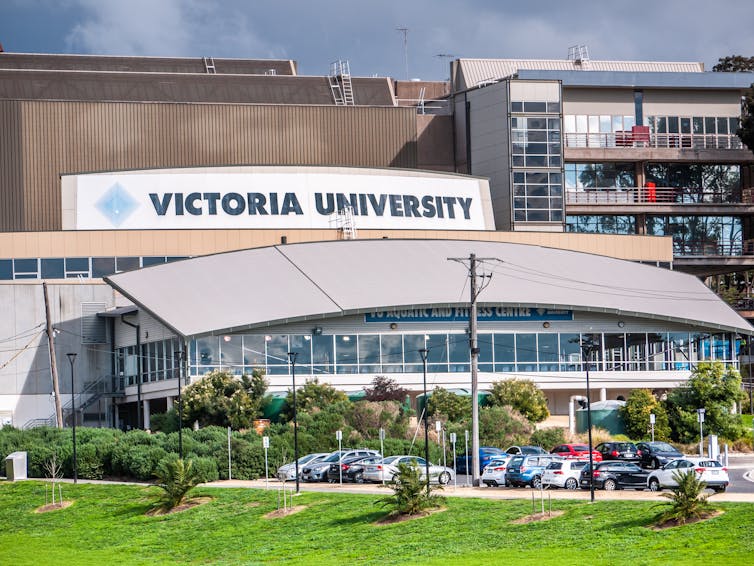 Shutterstock
ShutterstockFor the past two years, Melbourne’s Victoria University has been delivering its bachelor degrees using a block model, where students study one unit at a time rather than four units at once. Each unit, or block, is four weeks long and the study year is broken into ten blocks – four in each semester and optional winter and summer blocks.
Victoria University’s figures show 87% of its first-year students passed their units in 2019, the year after the block model was introduced, compared with 74% in 2017.
The university says student attendance has been at 90% compared with around 40% before the block model. Other benefits include more high distinctions, and increased pass rates for students of low socioeconomic backgrounds.
But an anonymous letter by a student recently published in literary journal Overland protested against the block model. Among the many complaints were that students didn’t have time to let material sink in and were effectively “cramming” information.
I led a study, from 2015 to 2017, into intensive mode teaching of which the block model is an example. We found intensive mode worked well for all courses. Students and teachers reported many benefits of the model, as long as it was carefully planned to mitigate risks, such as student and staff burnout.
How intensive mode works
Our study involved a survey of 105 academics in charge of intensive units at 26 Australian universities.
We also studied eight intensive units and three matched traditional units in engineering and business at four universities. This involved workshops or focus groups with students and follow up surveys, and interviews with teaching staff.
Commonly, university students complete about four units at the same time per semester. Lectures, tutorials and laboratory sessions are dispersed throughout the weekly timetable during a full 12 or 13 weeks of a semester.
In intensive mode, students attend classes for longer per day, and on fewer days, than in the traditional mode. Most Australian universities teach some units using intensive mode, especially in health courses and in postgraduate business and law courses.
In Victoria University’s model, students complete a whole unit, including assessment, in four weeks. Students can complete four units in a semester, in four separate blocks. Students also attend classes on only three days a week.
Other examples of intensive models involve two full days of classes, a full week of classes, and a full day of classes each week for seven weeks.
Why use the block model?
The most common reason survey participants gave for using intensive mode was to allow students and teachers to take on activities between classes. With longer classes on fewer days, students and staff have more days available to study, gain practical experience, work or complete research.
Students can also take intensive units in summer or winter blocks to catch up. And universities use the model to bring guest speakers in from industry.
Many academics – across science, engineering, maths and humanities – in our study said they enjoyed using intensive mode in their subjects. But they said the model would not work for subjects different from theirs that were, for example, in some way more technical or more project-based.
 Victoria University offers bachelor degree study via the block model.Shutterstock
Victoria University offers bachelor degree study via the block model.ShutterstockBut this was only an assumption, and it was inconsistent with the diversity of units taught by survey participants.
University teachers and students told us long classes in intensive mode provided opportunities to bond and for extended practical activities. They also enjoyed the retreat-like focus on one or two units.
Problems with the intensive model
The intensive study model could be a problem for students who would rather study part time due to commitments such as care, work or needing to access health services. Students with difficulties such as disability or weak English could also suffer under the block model as they may need more time to learn than others.
These groups of students are unlikely to have the option of part-time study in a block model such as offered across undergraduate courses at Victoria University.
To see if students could grasp difficult concepts in intensive mode study, we focused our research on the hurdles they need to overcome in a unit.
Students said that, in the long classes in intensive mode, they could learn about a concept, apply it and face and overcome difficulties all in one day. This only happens if the student tries to apply the difficult concepts early in the unit, therefore tackling the most challenging learning during class time where guidance is available.
We recommend academics structure the unit and assessments to ensure students progress through these particular aspects of the course early and are supported to learn together in the long classes.
Read more: Why block subjects might not be best for university student learning
Academics should also design programs with connected units to ensure students revisit these particular hurdles, as is necessary in any mode.
In our study, many students did not understand the intensive mode until they were already behind. Students who fall behind in intensive mode have little time to catch up.
So they need to be warned their block model workload should be equivalent to the workload they would normally give a unit over a full semester. They need to know to work intensively from the first day.
Students also reported burning out if they took too many consecutive intensive units, so sufficient breaks need to be structured in between.
Students told us they can become overloaded when block models are combined with other models. And we found academics can struggle in intensive mode to provide feedback on time and have students apply it. Assessment design and marking resources must allow for timely feedback to students.
Careful design is important to overcome difficulties. Good teaching is especially important in intensive modes to mitigate the risks and take advantage of the opportunities.
Sally Male received funding for the Intensive Mode Teaching Project, which was supported by the Australian Government Department of Education and Training (Strategic Priority Grant SP14-4624). The views expressed in this report do not necessarily reflect the views of the Australian Government Department of Education and Training.
Authors: Sally Male, Researcher in Engineering Education, University of Western Australia
| < Prev | Next > |
|---|








